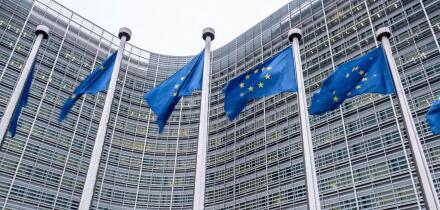The World Bank joined an exclusive club of just two supranationals — the other being the European Investment Bank — when it printed its first green benchmark in euros in March. But the issuer’s decision is expected to help that club grow — as well as green volumes in the currency generally.
The deal, a €550m three year bond sold through Crédit Agricole, Morgan Stanley and SEB, crowned a period of rapid development in green bonds. Just over a year ago the International Finance Corporation priced the first green bond to reach the $1bn marker, in the summer of 2013 State of Massachusetts became the first US state to sell a green bond and City of Gothenburg the first city to sell one.
“The supranationals have been building the green bond market, planting seeds for it to develop,” says Reichelt. “For other ‘new’ markets — like local currency markets — it is often the supranationals that open the markets by working with clearing systems and others, and then the market develops from there.”
Key to the development of the market is boosting awareness of the concept, which the release of a set of voluntary guidelines — dubbed Green Bonds Principles — with 13 undersigning banks in February is already helping to do.
“They have created awareness for the market thanks to the number of banks that got on board and investors and issuers that provided input,” says Reichelt. “Now there is more consensus with the banks that are already part of the Principles — and the market in general — when people refer to green bonds, or even sustainable bonds. That helps the market tremendously, because banks are the bridge between the issuers and the investors.”
In response to investor feedback at a Green Bond Symposium it hosted last year, the World Bank is working to provide information on metrics and indicators that show the impact that the projects investors are backing have.
Evolution, not revolution
“We have been putting resources into this — across departments — and working together with other multilateral development banks in an effort to harmonise definitions and methodologies,” says Reichelt. “Hopefully this will be helpful as other issuers look to report on the impact of their projects if they see the indicators and format in which we are reporting impacts for climate mitigation and adaptation projects. We hope this will contribute to the evolution of the market, but we also don’t want issuers looking at this market to be put off because of the amount of work involved in impact reporting. Building a green bonds programme is a step-by-step process. As an investor told us, it’s an evolution not a revolution.”
For example, the World Bank predicts that one of its projects financed by green bonds — funding developments in eco-farming in China — is expected be able to reduce CO2 equivalent emissions in the project area by 800,000-1,000,000 tonnes a year by promoting environmentally friendly and economically efficient farm production by the end of the project. Other projects backed by the green bonds include infrastructure to prevent climate-related flood damage, energy efficiency projects and renewable energy installations.
The goal to report impacts is far from simple. “It takes a lot of work to develop,” says Reichelt. “I’ve learned that methodologies for analysing greenhouse gas emissions are evolving. Plus it is hard to evaluate impacts and set project boundaries.
“For example, my colleagues often work with governments and finance projects that can be replicated. So while one project financed by the World Bank might reduce carbon emissions in a country by x tonnes a year, part of the value of the project is that it can spark imitation projects in that country or region, meaning that the impact on carbon emissions could be multiplied. That’s important, but how can that be captured in the indicators? And it is hard to estimate the social impacts of, for example, the full benefits of having safer as well as greener transport systems.”
Working with investors has been a core part of the World Bank’s progress in this sector. It developed its first bond, a Swedish krona issue through SEB, through working with interested investors.
Green bond issuance has helped the World Bank attract new investors to its name — for example among the 21 accounts that bought the World Bank’s green euro benchmark were several that hadn’t bought its bonds before. It has also been able to reach new US investors through its green issuance, a strategic goal for the issuer.






